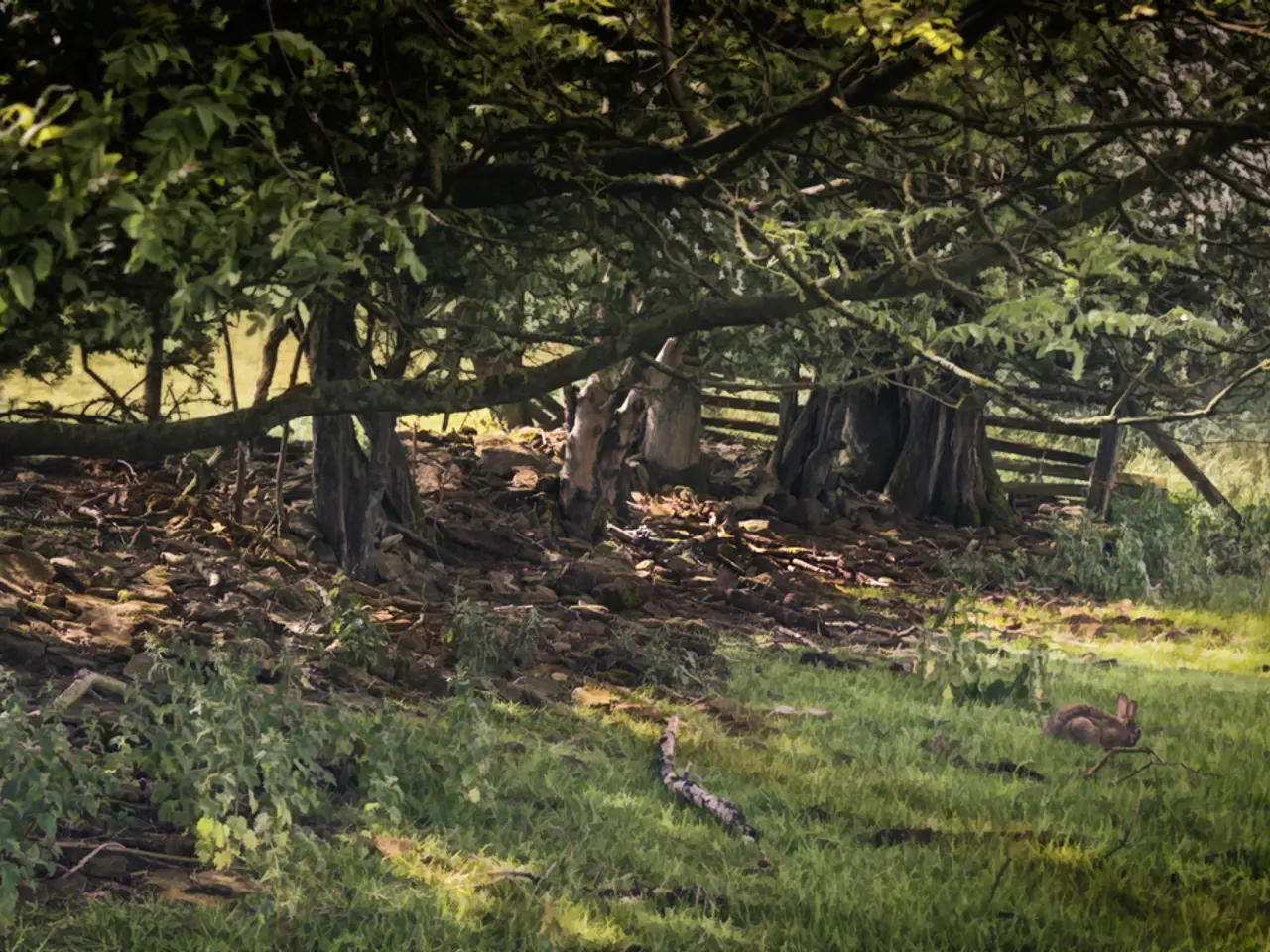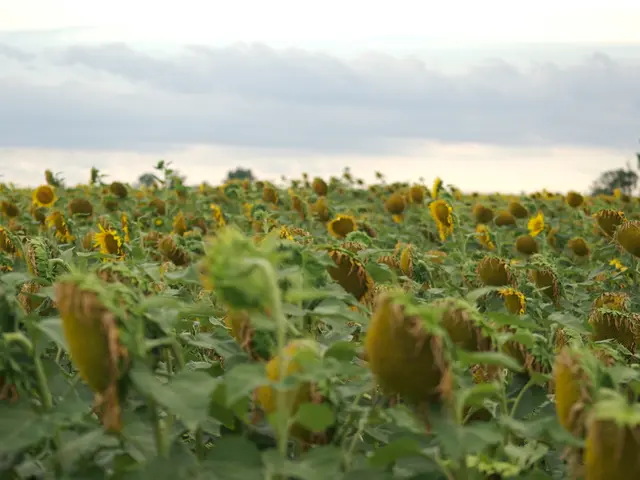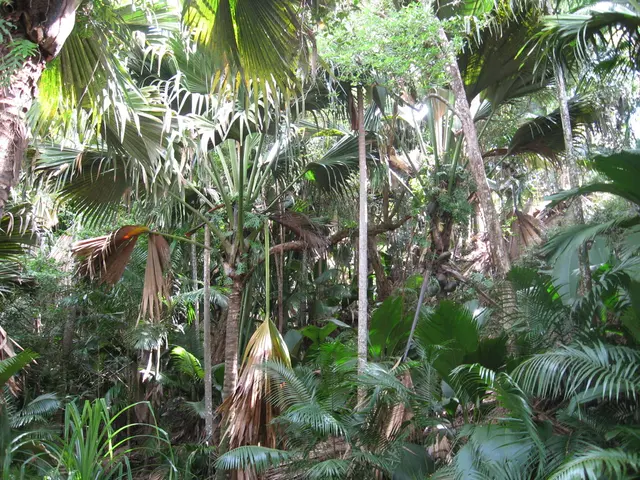Eradicating nuisance couch grass: A how-to guide
In the world of gardening, one persistent challenge is the infestation of couch grass (*Elymus repens*), also known as quackgrass. Known for its extensive root system and seed production, this clump-forming perennial grass can wreak havoc on lawns, flowerbeds, and vegetable patches. However, fear not, as both organic and chemical methods are available to manage its spread effectively.
## Organic Methods
### Hand Weeding or Digging
For small-scale infestations, hand weeding or digging is an effective solution. Using a hand weeder tool or digging up the grass, ensuring you remove every piece of the root system, can help control couch grass growth. Remember, if any roots are left behind, couch grass will regrow, so it's crucial to be thorough.
### Mulching
Applying a thick layer of organic mulch like straw, peat moss, or wood chips can suppress the growth of couch grass. While this method may not eliminate existing roots, it is effective in preventing new growth.
### Solarization
Solarization, similar to the method used for bermudagrass, involves covering the area with clear plastic sheeting and leaving it for several weeks during the hottest part of the summer. This method can kill the grass and its roots by trapping heat and moisture. To ensure success, ensure the plastic remains intact without holes to prevent any parts of the plant from surviving.
## Chemical Methods
### Herbicides
For warm-season lawns, selective herbicides like **Certainty** in combination with a surfactant can target couch grass without harming your lawn. Always follow the instructions on the label and take necessary safety precautions.
### Non-Selective Herbicides
For severe infestations or areas where lawn health isn't a concern, non-selective herbicides can be used. These will kill all vegetation, requiring immediate re-seeding or re-turfing afterward. Be cautious with non-selective herbicides as they can harm desirable plants and require careful application.
### Glycosphate (Roundup)
Glycosphate, a non-selective herbicide, should be used as a last resort, especially in areas where other plants are to be preserved. This substance will kill all vegetation it comes into contact with. Use it carefully, as it can harm non-target plants and may require repeated applications to eradicate couch grass fully.
## Preventative Measures
### Healthy Lawn Care
Maintaining a healthy, dense lawn is key to reducing the likelihood of couch grass invasion. Regular mowing, adequate watering, and fertilization can all help create a robust and resilient lawn that is less susceptible to couch grass encroachment.
### Prevent Seed Dispersal
Avoid spreading seeds during mowing by using a mower with a bag attachment or by composting clippings thoroughly.
### Use Landscape Fabrics
Installing landscape fabrics can prevent weeds from growing through by blocking light and preventing seed germination. This method is particularly effective in areas without established vegetation.
By combining these methods, you can effectively control and prevent the spread of couch grass in gardens. Remember, couch grass can be found in various places, from cracks in paving to freshly dug soil, borders edging lawns, and established flowerbeds. With diligence and the right strategies, you can keep your garden free from this persistent pest.
Behind the home-and-garden lifestyle, couch grass remains a persistent challenge in gardening, especially in flowerbeds and vegetable patches. To address small-scale infestations, hand weeding or digging with a hand weeder tool, followed by removing every piece of the root system, is an organic method effective in controlling couch grass growth. Outside of organic solutions, solarization – covering the area with clear plastic sheeting for several weeks during summer – can help kill grass and its roots by trapping heat and moisture.




